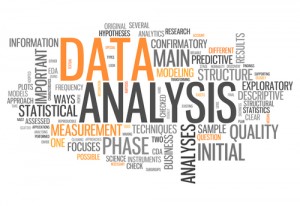What is Quantitative Analysis?
Let’s talk Quantitative Analysis!
When is comes to operating a profitable business there are a variety different challenges. Many of which involve understanding what consumers want and then meeting their needs. There are many ways to go about securing this type of information today but one of the most common in business settings all over the U.S. and abroad involves the use of quantitative analysis. So, for people who are interested in what this type of analysis consists of, here’s some valuable information about this topic listed below.
What is quantitative analysis?
Quantitative analysis can be described as a business or financial analysis technique that seeks to comprehend or understand human behavior. This technique involves the use of complex research, mathematical equations and statistical modeling. When this kind of analysis is used by a quantitative analyst, their job is to duplicate reality by assigning a numerical value to different variables that dictate courses of action. It is also important to note that this kind of analysis can be used for a diversity of purposes including securing the valuation of a financial instrument, identifying measurements, and for performance evaluation. When quantitative analysis is used in a stock market setting, the analysts are normally tasked with predicting real world changes and fluctuations in stock market prices accordingly.
What is the role of Quantitative Analysts?
Quantitative analysts can work in different business environments, especially because they are needed in numerous areas of a company. In fact, some analysts may work for multiple users in the performance of their job duties and responsibilities. For instance, if an operations manager wants to make major improvements in their customer support areas, they may consult with a quantitative analyst to obtain the performance evaluation and measurements that they need. The information that these analysts supply are often used to make a wide variety of different financial decisions.
An individual who chooses the quantitative business analysis career should make sure that they understand the basic requirements for this job. Because of the role that they play in many financial organizations today, most companies are looking for analysts who are skilled and knowledgeable in quantitative finance. Which means, in preparation for the quantitative analytics role, the person must have a heavy background in programming because they will be involved in lots of research and quant trader model implementations.
What Are The Different Types Of quantitative analysis tools?
To perform the duties and responsibilities of a quantitative analyst, it is important for the person to be familiar with the tools that’s used to gather and analyze the data that they need. Due to many advancements in quantitative analysis for management solutions technology today, these analysts have a wide diversity of software tools available to them. Some of the more popular in the industry are designed to produce hypothesis testing, graphs and linear regressions. Therefore, the analysts will need to know how to create financial mathematics ranking spreadsheets via spreadsheet software applications and other tools.
With a basic mathematical background, the analysts should also be able to gather, analyze and then interpret the data that they produce to their users. Once presented, the data can be used to forecast and determine the probabilities of certain things happening. For instance, when an analyst has been assigned to a sales organization, they may be required to create a bar graph that shows the quantitative methods to the finance upper management team and dictate the number of sales that the staff can expect to make per month. The information that they present is often based on figures and sales numbers from past months and even years.
Quantitative analysts are also involved in forecasting information for investments in stock. These tasks can be accomplished by developing quantitative stock-selection models and mathematical finance rankings. This kind of model can be used to predict how specific stocks will perform. For instance, the models are based on the history of low price stocks and how they perform over time.
Quantitative analysis is used in businesses all over the U.S. and abroad. This kind of analysis is used for many different reasons and purposes. Quantitative analysts are in high demand and assist upper management to distinguish asset allocations.
 Follow
Follow
